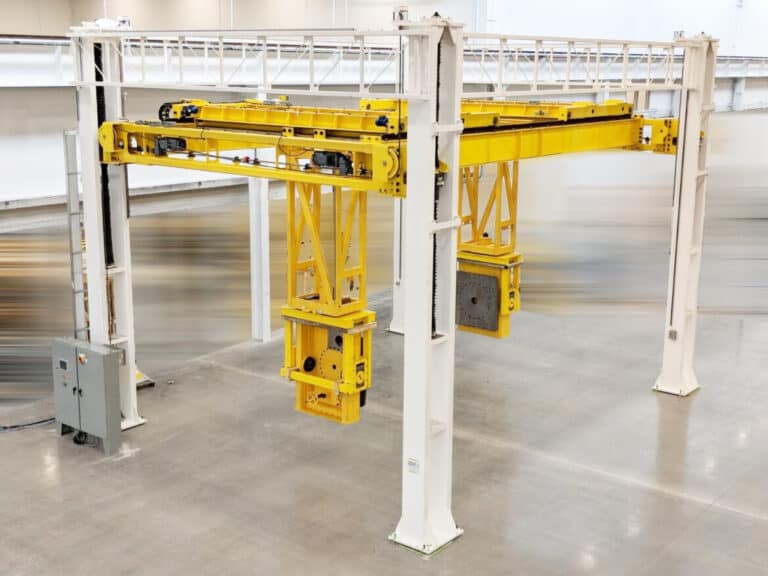Understanding the Inclusions of moving and Freight Forwarding in the World of Global and residential Shipping
Guiding through the intricacies of moving and Freight forwarding can be difficult. Both procedures include distinctive treatments and requirements that are important for effective transport. Recognizing the distinctions in logistics, documents, and risk monitoring is essential for people and companies alike. This knowledge can greatly impact the performance and safety and security of shipments. Nonetheless, several are unaware of the particular components that influence the overall experience and end results. What elements should one think about to assure a smooth changeover?
The Fundamentals of moving and Freight Forwarding
moving and Freight forwarding are basic parts of the worldwide logistics market. They promote the transfer of items and personal items throughout residential and international boundaries. moving primarily includes the moving of individuals or family members, incorporating household and industrial requirements. It generally includes packaging, filling, moving, and unboxing products at the destination. In contrast, Freight forwarding is concentrated on the delivery of products, typically wholesale, utilizing numerous transport modes, such as sea, land.freight, or air forwarders act as middlemans, working with logistics to guarantee timely delivery while steering via facility guidelines and customizeds procedures. Both processes call for cautious planning, company, and interaction to ensure efficiency and reduce disturbances. Understanding these fundamentals is important for any person entailed in logistics, as they prepared for advanced facets of delivery and transportation monitoring.
Secret Elements of Freight Forwarding Solutions
Freight forwarding services incorporate a number of essential parts that guarantee smooth transportation of products. Secret responsibilities of Freight forwarders include managing logistics, working with shipments, and taking care of customizeds clearance. Furthermore, recognizing crucial delivery paperwork is essential for compliance and efficient motion of freight.
Freight Forwarder Responsibilities
A reputable Freight forwarder plays a crucial function in coordinating the transportation of goods, guaranteeing that deliveries are taken care of successfully and in compliance with policies. Their duties include various essential tasks, consisting of choosing perfect transport courses, bargaining Freight rates, and handling logistics. They act as middlemans in between shippers and service providers, ensuring that freight is properly packaged and labeled for risk-free transportation. Additionally, Freight forwarders track shipments, offering updates to clients concerning the standing and anticipated shipment times. They additionally examine and handle risks related to transportation, suggesting insurance policy options as required. By promoting interaction and documents, Freight forwarders enhance the shipping procedure, minimizing possible hold-ups and boosting general supply chain efficiency.
Shipping Documents Essentials

Recognizing Personalizeds Clearance and Documentation
Accurate paperwork is vital in the personalizeds clearance process, as it ensures compliance with various regulations. An overview of custom-mades guidelines highlights the complexities faced by carriers and Freight forwarders. Usual clearance obstacles can greatly affect delivery timelines and expenses, making understanding this facet essential for reliable logistics.
Value of Accurate Documents
Steering with the complexities of international delivery requires a keen understanding of custom-mades clearance and the vital duty of documentation. Accurate documents is essential for making sure that deliveries abide with laws and reach their locations immediately. Properly prepared papers, consisting of bills of lading, commercial invoices, and packing lists, assist in smooth communications with personalizeds authorities. Mistakes can bring about delivery delays, fines, and even confiscation of products. Moreover, thorough documents aids in tracking deliveries and dealing with disputes. As a result, organizations participated in moving and Freight forwarding have to focus on precise documents methods to browse the detailed landscape of global delivery successfully. This persistance not just streamlines procedures but additionally improves consumer satisfaction by guaranteeing prompt distribution.
Customizeds Regulations Review
Steering personalizeds guidelines is a crucial element of worldwide profession that straight impacts the success of moving and Freight forwarding operations. Effective custom-mades clearance needs an understanding of numerous guidelines, consisting of tariffs, obligations, and import/export constraints. Precise documents is vital, as it ensures compliance with legal requirements and assists in the efficient activity of items throughout borders. Key papers often include commercial invoices, packaging lists, and expenses of lading, which give thorough information concerning the shipment. In addition, personalizeds brokers play an important duty in steering complicated policies, acting as middlemans in between shippers and personalizeds authorities. By keeping thorough understanding of customs processes, companies can substantially minimize hold-ups and minimize expenses linked with international delivery.
Typical Clearance Difficulties
Numerous obstacles can arise throughout the custom-mades clearance procedure, usually making complex the movement of goods throughout boundaries. One considerable concern wants paperwork, which can lead to charges and hold-ups. Importers and exporters have to assure all needed documentation, such as billings, packaging lists, and certifications of origin, is complete and accurate. In addition, disparities in valuation can trigger examination from customs authorities, causing added obligations or evaluations. Language obstacles might likewise pose difficulties, as miscommunication can result in misunderstandings concerning guidelines. Changes in custom-mades regulations can develop complication, necessitating consistent watchfulness by shippers. Eventually, getting over these clearance challenges requires thorough prep work and a clear understanding of customs requirements to facilitate smooth worldwide transactions.
Product Packaging and Labeling Requirements
Although often overlooked, product packaging and labeling needs play a vital role in the shipping procedure, making sure that products are shielded and quickly recognizable throughout their journey. Correct product packaging safeguards things from damages during transit, while likewise facilitating efficient handling and storage space. Making use of suitable products, such as bubble cover, foam, or strong boxes, can avoid damage and loss.Labeling is similarly vital. Accurate and out of state moving companies clear labels convey important details, including the location, door to door moving handling guidelines, and materials. Labels must adhere to regulations specific to domestic and international shipping, which might consist of hazardous products recognition or custom-mades declarations.Moreover, standard labeling techniques simplify the tracking procedure and boost total logistics performance. By adhering to product packaging and labeling demands, organizations lessen the threat of delays, damage, or misdelivery. Inevitably, these techniques add significantly to the success of moving and Freight forwarding operations, ensuring a seamless delivery experience for all celebrations entailed
Tracking Deliveries: Significance and Approaches
Reliable packaging and labeling established the foundation for effective delivery monitoring, yet tracking shipments is similarly necessary in the delivery procedure. Shipment monitoring supplies real-time presence, which assists customers and organizations monitor the progression of their products. This transparency improves customer fulfillment, since customers can remain informed about delivery timelines and any kind of possible delays.Several methods facilitate effective monitoring. Barcode scanning is a common technique, making use of unique identifiers to check bundles throughout their journey. In addition, GPS modern technology makes it possible for exact place tracking, enabling prompt updates and improved logistics management. Several shipping firms currently supply digital systems and mobile applications that give customers with simple access to tracking information.The importance of delivery tracking can not be overstated; it reduces the risk of shed or harmed products, enhances operational efficiency, and promotes depend on between carriers and receivers. Integrating reliable monitoring methods is important for effective domestic and worldwide shipping procedures.
Insurance coverage Options for Your Product

Safeguarding insurance coverage for goods in transportation is an essential factor to consider for individuals and companies alike. Insurance choices vary based upon the kind of shipment, value of goods, and details threats included. Typical types consist of service provider responsibility, which covers loss or damages while in transit, and full-value insurance coverage, providing extensive protection for the complete worth of the goods.Shippers may additionally take into consideration marine insurance coverage for global deliveries, protecting against dangers connected with sea transport. It is vital to examine the particular requirements of the shipment and evaluate the terms and conditions of any kind of policy.Furthermore, comprehending exclusions and restrictions is essential to avoid possible spaces in insurance coverage. Shippers ought to engage with insurance professionals to discover customized remedies that fit their unique circumstances. Ultimately, buying the best insurance can reduce monetary threats and provide comfort throughout the shipping process.
Choosing the Right moving and Freight Forwarding Service
When selecting a moving and Freight forwarding service, it is vital for individuals and businesses to thoroughly assess their certain needs and priorities. Aspects such as the quantity of goods, location, and timeline play a considerable function in this decision-making process. Investigating numerous providers is a good idea; contrasting their solutions, rates, and consumer testimonials can expose beneficial insights.Additionally, it is needed to take into consideration the experience and proficiency of the service supplier in dealing with details kinds of cargo, specifically for international deliveries that might include custom-mades clearance. Transparency in pricing, consisting of any type of concealed costs, need to additionally be scrutinized.Furthermore, assessing the level of customer assistance used is crucial, as prompt communication can alleviate issues throughout transit (freight shipping). Validating the accessibility of insurance coverage alternatives assures that products are shielded throughout the shipping process. By taking these people, actions and services can make enlightened selections that align with their logistics requirements
Often Asked Questions
What Kinds of Goods Can Be Shipped Globally?

How Do Delivery Costs Range Various Carriers?
Delivering prices vary significantly in between carriers due to aspects such as solution rate, cargo type, distance, and extra services used. Each copyright's pricing version mirrors these variables, affecting overall delivery expenses for customers.
Can I Ship Hazardous Materials or Perishables?
Shipping harmful products and perishables undergoes strict regulations. Providers frequently need particular product packaging, labeling, and paperwork. Carriers have to assure conformity with neighborhood and worldwide regulations to stay clear of fines and assure safe transportation.
What Should I Do if My Shipment Is Postponed?
When encountered with a delivery hold-up, one must first contact the service provider for updates. After that, examine any kind of notifications received, examine alternate remedies, and keep all events educated about the scenario to lessen interruptions.
Exist Weight Boundary for Shipping Containers?
Weight restrictions for delivery containers vary relying on variables like container size and shipping guidelines. Commonly, standard containers have an optimum gross weight of around 30,000 to 32,000 kgs to ensure risk-free transport and handling. In contrast, Freight forwarding is focused on the shipment of items, typically in mass, making use of various transportation settings, such as land.freight, sea, or air forwarders act as middlemans, working with logistics to ensure timely distribution while navigating via complicated guidelines and customizeds treatments. Secret duties of Freight forwarders consist of handling logistics, collaborating shipments, and dealing with customs clearance. A reliable Freight forwarder plays an important function in collaborating the transportation of goods, guaranteeing that shipments are managed effectively and in conformity with guidelines. Efficient packaging and labeling established the foundation for successful shipment management, but tracking shipments is just as vital in the delivery process. Many delivery business currently provide electronic systems and mobile applications that offer customers with very easy accessibility to tracking information.The significance of shipment tracking can not be overstated; it reduces the risk of shed or damaged items, enhances functional efficiency, and fosters trust fund in between carriers and recipients.
Comments on “International shipping framework: What to know for smooth operations”